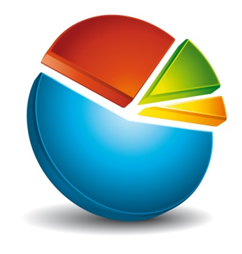
Collecting information from every type of customer, patient, fan, attendee, member and others who are important to your business or organization is valuable. People's opinions and feedback can change each day, and understanding these changes is helpful when making important decisions.
Data collection is a difficult task at best. Some data is gathered using outdated methods, with possible questionable results due to built-in bias and enormous amount of labor-intensive work. Large companies have large budgets for research, and smaller organizations may fear conducting surveys is unaffordable.
Many forms of research tools are available to gather opinions and data, and the primary ones are:
Clipboard Surveys
It's easy to see a typical example of data collection using clipboard surveys at local malls and trade shows. This type of polling can yield some good results over a large amount of time, but has some serious drawbacks. It can take months to complete a survey and respondents don’t particularly enjoy the process (especially answering the more sensitive questions). Polls can be biased by the interviewer and perhaps only 2-3 people can be interviewed per hour. And, just imagine the data entry errors resulting from manually entered data!
Phone Polls
Generally speaking, people don’t like phone polls. Pollsters may have to call potential respondents at night, since this is the only time they are home and, of course, calling respondents at work is not recommended. Just think, would you answer a call when your Caller ID shows "unknown"? Interviewers’ remarks during the process can greatly bias results; nonetheless, phone interviewing is the common way to survey largely displaced audiences. Recent legislation regarding phone solicitation will greatly diminish it not totally eliminate this method of data gathering.
Comment Cards
Research shows that comment cards are usually filled out by those very unhappy with a service or product, or by those wishing to give a particular employee or friend a special “boost”. Sadly, only a fifth actually fall into the category of the “normal” customer, those who generally represent the backbone of any business’ future. As a result, management often gets a distorted data picture from reviewing comment cards, making it nearly impossible to reward staff for above-average work habits.
Focus Groups
Focus research can be an essential part of many research projects. Groups can provide meaningful insight into comprehending the market and eventual goal fulfillment. This is a very difficult process, though, best supervised by seasoned experts. Choosing the group make up requires great skill. Focus studies normally include 10-12 participants each, in clusters of three groups of equal size and appropriate demographics. Sessions can take from an hour to several hours, and participants are generally compensated.
Online Research
Online data collection is an excellent way of gathering important information inexpensively and quickly, but it skews the demographics including only those who have access to a computer or smart phone. So obtaining scientific sampling could be challenging, potentially creating a gap of a needed demography.
As technology has grown rapidly, there are hundreds if not thousands of companies doing research online. Even with a continual growth of online research, it will always be difficult to poll, for instance, the customers of a particular store in a given month, or the attendees of a trade show or convention.
Technology-Based Intercept Research
Interactive touchscreen survey systems are attractive to all demographic groups and they are self-administered by the respondents (which greatly reduces bias). Touchscreen surveys are 9-10 times as fast as clipboard surveys and phone polls, and they are easily customizable to branch respondents to the right questions. When a respondent touches an answer, it is automatically entered and tabulated, thus eliminating manual data entry.
While intercept touchscreen opinion surveys are not suggested for all research needs, there is no better way to capture feelings on the spot, feelings that fade rapidly once the respondent leaves the location. Studies have shown that nearly half of all point-of-interaction is lost within just a few days, which is well before most research is commonly conducted. Thus, measuring reactions and collecting feedback instantly is critical to many businesses and organizations.

